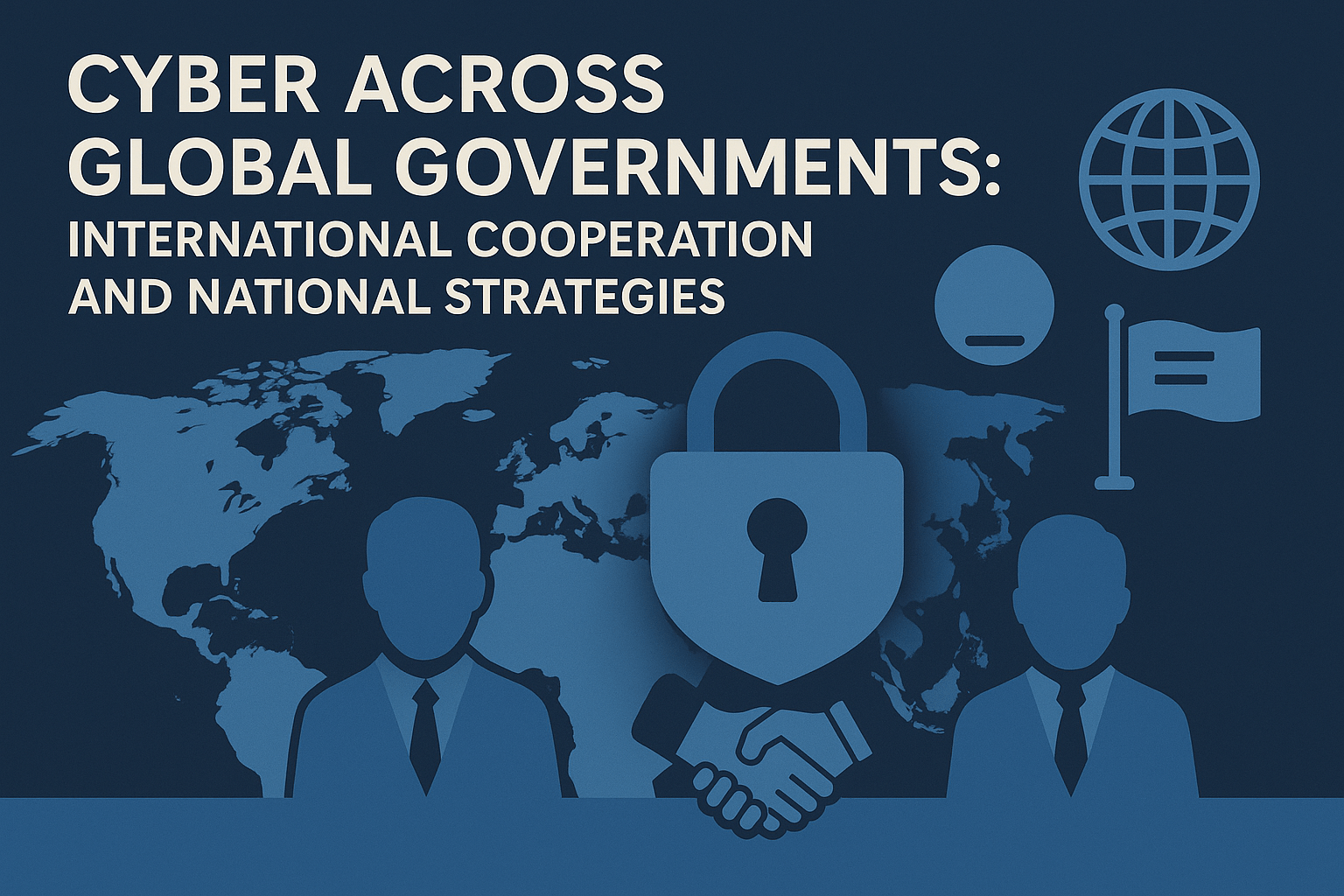The United States is arguably the most influential force in global cybersecurity, but its governance model is sprawling, federal, and often opaque to outsiders. Responsibility is distributed across military, civilian, and intelligence agencies, each with their own authorities, funding mechanisms, and strategic priorities.
Who runs cybersecurity in the U.S. federal system, and how to engage with them.
From the White House’s cyber executive orders to the Department of Defense’s operational commands, this guide maps the major actors in U.S. government cybersecurity and highlights where UK or international stakeholders can engage for influence, funding, or collaboration.
1. Strategic Policy Leadership: White House and National Coordination
Office of the National Cyber Director (ONCD)
- Role: Leads national cyber strategy from the Executive Office of the President.
- Key Deliverables:
- U.S. National Cybersecurity Strategy (2023)
- National Implementation Plan
- Why it matters: ONCD sets direction for civilian and private sector cyber resilience across all sectors.
Link: https://www.whitehouse.gov/oncd/
National Security Council (NSC) – Cyber Directorate
- Role: Coordinates cyber-related national security and foreign policy at the highest level.
- Why it matters: NSC links cyber defence with diplomatic and military strategy, especially on topics like state-sponsored attacks and critical infrastructure.
2. Civilian Cyber Agencies and Framework Developers
Cybersecurity and Infrastructure Security Agency (CISA)
- Parent: U.S. Department of Homeland Security (DHS)
- Role: America’s civilian cyber defence agency.
- Responsibilities:
- Shields critical infrastructure.
- Issues threat alerts and best practices.
- Coordinates with private sector and state governments.
- Flagship Initiatives:
- Shields Up
- Cyber Hygiene Services
- Zero Trust Maturity Model
Why it matters: CISA is a key partner for international collaboration on cyber risk, standards, and public-private partnerships.
Link: https://www.cisa.gov
National Institute of Standards and Technology (NIST)
- Parent: U.S. Department of Commerce
- Role: Develops cyber frameworks and technical standards (voluntary but widely adopted).
- Core Frameworks:
- NIST Cybersecurity Framework (CSF)
- NIST SP 800 series (e.g. 800-53, 800-171)
- Why it matters: NIST’s work influences procurement, regulation, and insurance worldwide.
Link: https://www.nist.gov/cyberframework
3. Operational and Intelligence-Led Agencies
Federal Bureau of Investigation (FBI) – Cyber Division
- Role: Investigates cybercrime, ransomware, nation-state intrusions, and critical infrastructure threats.
- Key Programme: Internet Crime Complaint Center (IC3)
Link: https://www.fbi.gov/investigate/cyber
National Security Agency (NSA) – Cybersecurity Directorate
- Role: Defensive cybersecurity, cryptography, and national systems protection.
- Distinct from the NSA’s foreign intelligence role.
- Why it matters: Operates classified programmes for critical national security systems, but also publishes public guidance (e.g. secure-by-design principles).
Link: https://www.nsa.gov/Cybersecurity/
U.S. Cyber Command (USCYBERCOM)
- Parent: U.S. Department of Defense (DoD)
- Role: Plans and executes cyber operations for military and national security objectives.
- Why it matters: Leads offensive cyber capabilities and supports defence of military infrastructure globally.
Link: https://www.cybercom.mil/
4. Federal Procurement and Innovation Channels
Department of Defense – CMMC & FedRAMP
- CMMC (Cybersecurity Maturity Model Certification):
Required for DoD suppliers, shaping global supply chain compliance. - FedRAMP (Federal Risk and Authorization Management Program):
A cloud service authorisation programme required for federal contracts.
Why it matters: These frameworks impact software vendors, MSPs, and service providers seeking to sell into U.S. federal markets.
DARPA (Defense Advanced Research Projects Agency)
- Role: Funds high-risk, high-reward cyber research for national defence.
- Why it matters: Early access to transformative cybersecurity research, AI, quantum, hardware trust, etc.
Link: https://www.darpa.mil
In-Q-Tel
- Role: Strategic investor for U.S. intelligence community.
- Focus: Invests in promising cyber, AI, and secure communications startups.
- Why it matters: Entry point for tech companies with national security relevance.
Link: https://www.iqt.org
Other Key Innovation Programmes
- NSF SaTC (Secure and Trustworthy Cyberspace)
- DOE Cybersecurity for Energy Delivery Systems (CEDS)
- NIH for health-sector cyber R&D
- SBA SBIR/STTR grants for small tech companies
5. State-Level and Sector-Specific Programmes
While cyber strategy is federal, implementation often occurs through states or sector regulators.
- State CISOs: Coordinate local resilience and threat response.
- Public Utility Commissions: Cyber regulation for energy and water infrastructure.
- Transportation Security Administration (TSA): Cyber directives for pipelines, aviation, and rail.
Why it matters: For operational technology (OT) or regulated sectors, these bodies define mandatory controls and risk postures.
6. How to Engage with U.S. Cyber Ecosystems
- Attend U.S. cybersecurity conferences:
RSA Conference, Black Hat, DEF CON, NICE, GovCon, and AFCEA events. - Collaborate via grants or consortia:
- Horizon EU–US calls
- UK–US bilateral research partnerships (e.g. NCSC–CISA collaboration)
- Engage with industry bodies aligned to federal policy:
- Cybersecurity Coalition
- IT-ISAC
- National Defense Industrial Association (NDIA)
- Contribute to NIST or CISA public consultations on frameworks and guidance.
Final Thoughts
Cybersecurity governance in the United States is vast, decentralised, and opportunity-rich. Navigating it requires understanding the interplay between strategy (ONCD/NSC), operations (CISA/FBI/NSA), and standards (NIST/DoD), and how they connect through funding, regulation, and procurement.
If you’re a UK or international stakeholder, the U.S. system can feel impenetrable. But by targeting the right agencies, engaging through standards, and participating in open calls or working groups, you can build lasting influence and market traction.
This isn’t just the world’s largest cybersecurity economy, it’s also one of its most collaborative. Know where to plug in, and you’ll find both allies and impact.
References
- Inside the UK Cyber Ecosystem: A Strategic Guide in 26 Parts
- The Insider’s Guide to Influencing Senior Tech and Cybersecurity Leaders in the UK
- Cyber Across US Government: Agencies, Frameworks, and Innovation Pathways
- The US Cyber Giants: Vendors, Solutions, and Federal Reach
- Cyber and Academia in the US: Ivy League Labs to Federal Research Programmes
